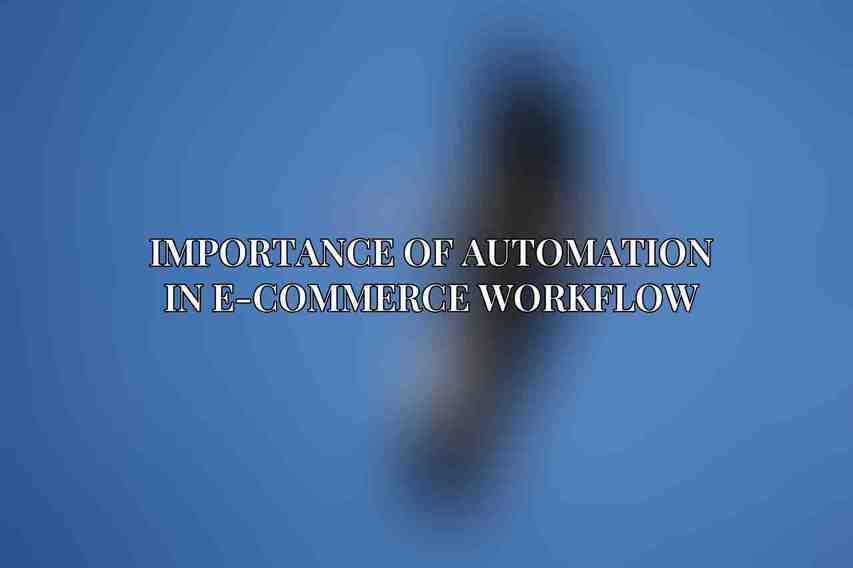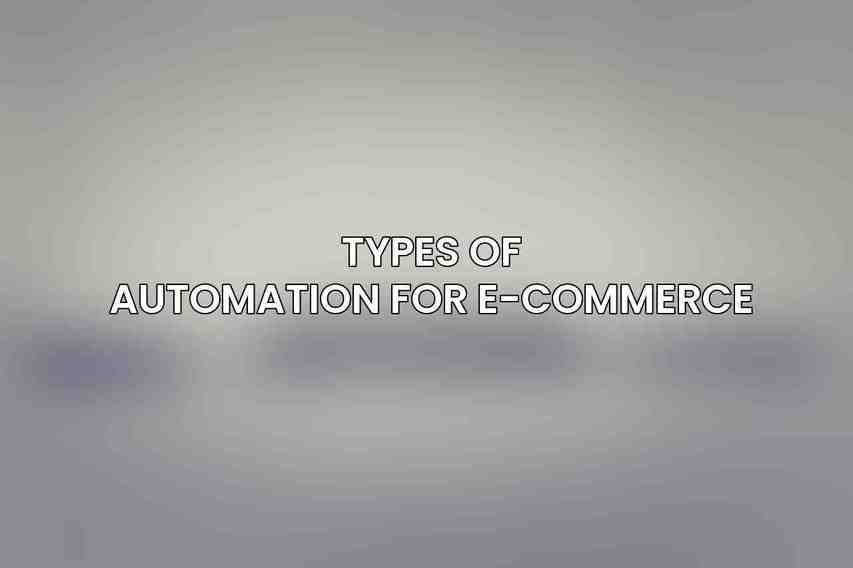Integrating automation into your workflow has become a key strategy for businesses looking to enhance efficiency, reduce manual labor, and elevate the overall customer experience. Automation not only streamlines processes but also helps in mitigating human errors, ultimately leading to improved productivity and cost savings. You can find more information on Inventory Management Made Easy with ClickFunnels Automation for E-Commerce Read more on The Ultimate Guide to E-commerce Email Automation for Small Businesses
Importance of Automation in E-commerce Workflow

Automating various aspects of your e-commerce operations can significantly impact your workflow in several ways:A. Streamlining processes for increased efficiency: By automating repetitive tasks, businesses can streamline their operations, saving time and resources.B. Reducing manual labor and human error: Automation minimizes the risk of human errors, ensuring accuracy in tasks like order processing and inventory management.C. Enhancing customer experience: Automated processes enable quicker response times, personalized interactions, and smoother transactions, contributing to a more seamless customer journey.
Types of Automation for E-commerce

When it comes to e-commerce automation, there are several key areas where implementation can make a substantial difference:A. Inventory Management:1. Automatic inventory tracking and updates: Systems can automatically update stock levels across all platforms in real-time.2. Reorder point alerts and purchase order generation: Receive alerts when inventory reaches a specified level and automate the process of generating purchase orders.
B. Order Fulfillment:1. Integration with shipping carriers for real-time tracking: Automatically sync order details with shipping carriers for seamless tracking.2. Automated order processing and shipping notifications: Orders can be processed and shipping notifications sent to customers without manual intervention.
C. Customer Service:1. Chatbots and virtual assistants for 24/7 support: Implement chatbots to handle customer queries round the clock.2. Automated email campaigns and personalized recommendations: Send automated emails with tailored product recommendations based on customer preferences.
D. Marketing:1. Automated social media posting and content scheduling: Automate social media posts and schedule content in advance.2. Email marketing automation based on customer behavior: Send targeted emails triggered by specific customer actions or behaviors. Read more about this on Maximizing E-Commerce Efficiency: Automating Checkout with ClickFunnels
Steps to Integrate Automation
To successfully integrate automation into your e-commerce workflow, follow these steps:A. Identify areas for automation:1. Analyze current workflow for repetitive or time-consuming tasks that can benefit from automation.2. Prioritize areas where automation can bring the most significant improvement in efficiency.
B. Choose the right tools:1. Research and evaluate available automation software and services that align with your business needs.2. Consider factors such as features, pricing, and ease of integration with your existing systems. Explore further with Understanding the Costs and ROI of Implementing E-commerce Automation Check this blog on Top E-commerce Automation Tools to Streamline Your Business in 2024
C. Implement and configure:1. Follow the setup instructions provided by the chosen automation tool.2. Configure rules, triggers, and workflows to automate processes effectively.
D. Monitor and optimize:1. Regularly review automated processes to ensure they are performing efficiently.2. Make adjustments as needed to enhance performance or add new automation features for more significant benefits. Dive deeper into Boosting E-Commerce Customer Engagement through ClickFunnels Automation
Stay tuned for more insights on the benefits of automation, case studies showcasing successful implementations, and best practices to guide you through your automation journey.
Continued in Part 2…
Frequently Asked Questions
What are the benefits of integrating automation into e-commerce workflow?
Integrating automation into your e-commerce workflow can enhance efficiency by reducing manual tasks, streamlining processes, minimizing errors, and allowing for scalability.
How can automation help with order processing?
Automation can help in order processing by automatically managing inventory levels, updating product information, processing orders, generating invoices, and sending out shipping notifications without manual intervention. Find more on Elevating Your Multi-Channel E-Commerce Strategy with ClickFunnels Automation
Which areas of e-commerce can benefit from automation?
Key areas of e-commerce that can benefit from automation include inventory management, order fulfillment, customer service, marketing automation, and data analytics.
What are some popular automation tools for e-commerce businesses?
Popular automation tools for e-commerce businesses include Shopify Flow, Zapier, Klaviyo, Mailchimp, and HubSpot, among others. Explore further with How ClickFunnels Can Revolutionize Your E-commerce Product Sales Process
How can I get started with integrating automation into my e-commerce workflow?
To get started with integrating automation into your e-commerce workflow, assess your current processes, identify repetitive tasks that can be automated, evaluate suitable tools and solutions, and gradually implement automation to streamline your operations.

